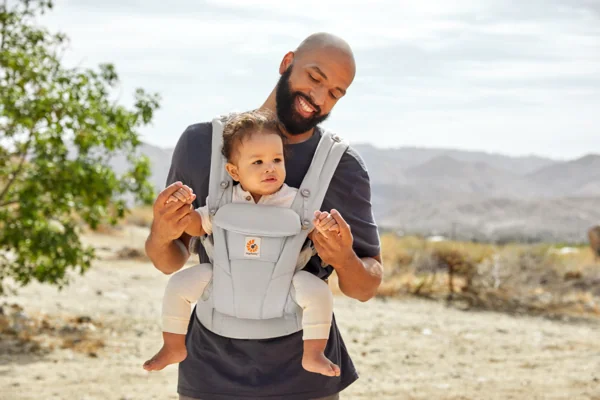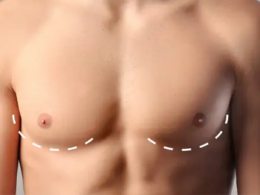Introduction
Baby wearing isn’t just a trend—it’s a centuries-old practice of carrying your baby close using a carrier, sling, or wrap. It’s not only convenient but also a great way to bond with your little one. If you’re new to baby wearing or just looking to learn more, this article is for you. We’ll explore the benefits, different styles, safety tips, and more—all designed to help you become a baby-wearing pro!
1. What is Baby Wearing?
Baby wearing is the act of carrying your baby using various types of carriers like wraps, slings, or structured carriers. It allows parents to keep their hands free while keeping the baby close.
2. Benefits of Baby Wearing
Baby wearing has many benefits for both parents and the baby:
- Enhances Bonding: Keeps your baby close, promoting emotional security.
- Hands-Free Convenience: Allows parents to complete tasks while holding their baby.
- Reduces Crying: Studies show that carried babies cry less.
- Promotes Physical Development: Proper positioning supports healthy hip development.
- Breastfeeding Support: Offers a discreet way to nurse your baby.
3. Popular Baby Wearing Methods
There are different ways to carry your baby depending on age, weight, and comfort:
| Method | Description | Best For |
| Wraps | Long piece of fabric tied around your body. | Newborns and infants |
| Slings | One-shoulder carriers with a pouch for the baby. | Infants and toddlers |
| Structured Carriers | Backpack-style carriers with padded straps. | Older infants and toddlers |
| Mei Tai | Asian-inspired carrier with a square body panel. | Infants and older children |
4. Choosing the Right Baby Carrier
With such countless choices accessible, picking the right child transporter can be precarious. This is what to consider:
- Age of the Child: Babies improve in wraps, while organized transporters are great for babies.
- Solace: Pick a transporter with cushioned lashes for long strolls.
- Usability: Go for slings assuming you maintain that something speedy should put on and take off.
- Reason: On the off chance that you’re anticipating climbing, an organized transporter is awesome.
5. Safety Tips for Baby Wearing

When wearing your baby, safety should always be a priority. Follow these guidelines:
- Tight and Secure: Guarantee the transporter is adequately cozy to hold the child back from drooping.
- Head Backing: The child’s head ought to be upheld, particularly for infants.
- Apparent and Kissable: You ought to constantly have the option to see the endearing faces and kiss their temple.
- Aviation route Check: Ensure the child’s jaw is off their mind to keep an unmistakable aviation route.
6. The Importance of Proper Positioning
The situating of your child in the transporter is significant to stay away from any hip or spine issues. Utilize the “M” position, where the knees are higher than the base, to help hip turn of events.
Common Mistakes to Avoid:
- Child’s back slumped.
- Legs hanging without knee support.
- Child confronting outwards too early.
7. Can Baby Wearing Help with Colic?
Indeed! Child wearing has been displayed to decrease colic side effects by giving a mitigating climate that emulates the belly. The delicate shaking movement and closeness can quiet a particular child.
8. How Long Should You Wear Your Baby Each Day?
There’s no severe rule, yet as long as you and the child are agreeable, child wearing is fine for a few hours every day. Be aware of your own stance and enjoy reprieves if necessary.
9. Different Baby Wearing Positions
There are multiple ways to wear your baby depending on their age and development:
- Front-Inward Carry: Best for newborns. Keeps them close to your chest.
- Hip Carry: Great for babies with good head control (4-6 months).
- Back Carry: Ideal for toddlers and longer outings.
10. The Science Behind Baby Wearing
Research shows that child wearing can lessen pressure in both mother and child, lower cortisol levels, and advance connection. Infants have a good sense of reassurance and guardians feel more sure.
11. Baby Wearing in Different Cultures
Child wearing has been a piece of many societies for quite a long time, from African kanga wraps to Asian Mei Tai transporters. Gaining from these customs can offer understanding into the best and agreeable ways of conveying your youngster.
12. Troubleshooting Baby Wearing Issues
If you’re having trouble, you’re not alone! Here are some common problems and solutions:
- Baby Feels Too Low: Tighten the wrap or sling to bring the baby closer to your chest.
- Back Pain: Adjust the straps and ensure your weight is evenly distributed.
- Fussy Baby: Try changing the position or adjusting the carrier to make them feel more secure.
13. FAQs on Baby Wearing
Q: Is baby wearing safe for newborns?
Yes, when done correctly. Ensure the carrier is tight and the baby’s head is supported.
Q: Can I breastfeed while baby wearing?
Yes! Many wraps and slings allow for discreet breastfeeding on the go.
Q: When can I start using a back carry?
Usually around 6 months when the baby has good head and neck control.
Q: Are baby carriers machine washable?
It depends on the fabric. Always check the manufacturer’s instructions.
Q: How long can I wear my baby each day?
There’s no limit, as long as both of you are comfortable and maintaining good posture.
14. Baby Wearing and Exercise
Did you know you can exercise while baby wearing? Low-impact activities like walking or gentle stretching can be done safely. Make sure the baby is secure and avoid vigorous movements.
15. Baby Wearing and Postpartum Health
For new moms, baby wearing can support postpartum recovery. It encourages gentle movement, promotes bonding, and can even help alleviate postpartum depression symptoms.
Ending Remark
Child wearing is something beyond a method for conveying your youngster — a way of life upgrades holding, gives solace, and makes life simpler for occupied guardians. Whether you’re utilizing a wrap, sling, or transporter, the key finding turns out best for yourself as well as your child. In light of the right procedures and security, child wearing can be a blissful encounter that upholds both you and your little one. In this way, go on, embrace the specialty of child wearing, and partake in those valuable minutes together!








